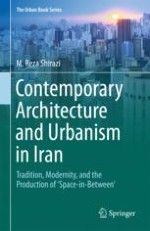2018 | OriginalPaper | Buchkapitel
3. Space-in-Between
verfasst von : M. Reza Shirazi
Erschienen in: Contemporary Architecture and Urbanism in Iran
Aktivieren Sie unsere intelligente Suche, um passende Fachinhalte oder Patente zu finden.
Wählen Sie Textabschnitte aus um mit Künstlicher Intelligenz passenden Patente zu finden. powered by
Markieren Sie Textabschnitte, um KI-gestützt weitere passende Inhalte zu finden. powered by
